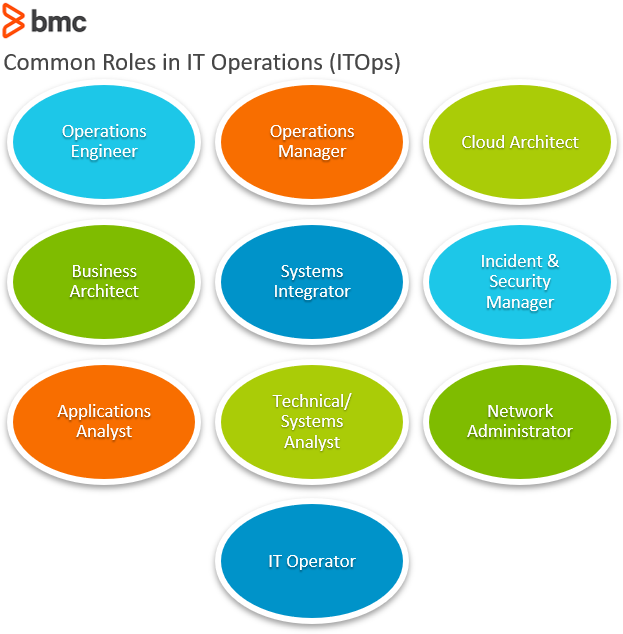The latest trends in IT Operations are changing the very assumptions about IT Ops and its role within organizations.
IT Operations have long described themselves as maintenance structures, overseeing data centers, delivering infrastructure projects, running business-critical systems. However, it is increasingly taking steps to become the leaders of innovation within organizations. The latest trends in IT Ops are now driving changes instead of simply absorbing them.
Business organizations are increasingly challenged to operate highly-scalable IT infrastructure—all while maintaining:
- Low costs
- High performance
- Minimal security risks
Both IT operations personnel and technology solutions are critical to achieving these goals. Maturing cloud infrastructure strategies gives rise to trends in the IT Operations domain that require organizations to invest in new technology trends and skills.
Here are some of the trends that will enable leaders to lay out pathways for creating a more robust, faster, and secure future.

Cloud-native platforms to keep up with disruptors
Companies that built their business on the public cloud from the ground up have become some of the biggest names today: over the last five years, the 15 largest unicorn IPOs were all digital natives. These companies are popping up across all industries, from banking to insurance to retail, and challenging the established businesses to catch up.
As a result, the latest trend across organizations is shifting to keep up with the agility and cost-effectiveness of digital natives. IT Ops teams increasingly feel the effects of a dramatic increase in public and private cloud budgets. Technology vendors and various partners actively engage with IT teams to make their cloud projects a success.
Cloud native platforms (CNPs) will help enterprises executive their urgent digital initiatives: Gartner estimates they will account for 95% of new digital initiatives by 2025. CNPs enable organizations to:
- Maximize their cloud computing potential by matching compute requirements with demand
- Enhance resilience and agility so that companies can deliver business value to customers faster.
Cloud native platforms enhance a range of digital workplace solutions and improve emerging automation technology processes and solutions. From orchestrating managed files transfers in a hybrid IT environment to synchronizing workloads and data pipelines across cloud platforms and applications, IT Ops will find increasing support in both infrastructure and application.
Plus, CNPs are a significant improvement over the conventional lift-and-shift approach that many teams have taken to the cloud. They offer more of the benefits of the cloud without adding any complexity to maintenance.
Rise of just-in-time infrastructure
For too long, companies have invested heavily in on-premises machinery. It required excessive maintenance even when it was not needed. However, cloud deployment enables I&O teams to deliver computing when and where it is required. It will increasingly make it easier to deploy on-demand cloud hardware possible.
This just-in-time structure also helps teams meet increasingly shorter timelines. A recent survey of tech leaders found that IT Operations teams must meet increasingly tight deadlines to meet business objectives. Technologies in deployment expect to reach adoption in the next 6-18 months. With this new structure, teams can deploy infrastructure as fast as possible in any needed location, such as data centers, the public cloud, wherever.
Time to deployment is a strong negotiating factor that helps give enterprises a strong position when competing with providers. Just-in-time infrastructure will lead an evolution in current providers’ relationships and broaden the option of provider solutions where feasible.
New business-minded skills for teams
A challenge for many IT Operation teams’ work and outcomes is that they struggle to clearly connect them with business needs and goals. It holds back innovation as leaders fail to make a compelling business cases for new initiatives and technologies.
To overcome this inherent weakness, new hires will have to have more than a technical background—instead bringing a business-based mindset. New employees will have to be able to find the business benefits of technology and help connect it with overall company goals. It will enable more effective and comprehensive business decisions that positively impact the whole organization.
For example, leaders need to be able to present a business case for just-in-time infrastructure, which necessitates more business acumen than most IT Ops teams have displayed in the past.
This need for business-minded new hires means that IT Ops will have to overhaul traditional hiring practices and create a cultural shift within teams. Some of the best ways that leaders can do this include:
- Changing the recruitment process to emphasize behavioral skills over technical
- Empowering non-technical hires to explain infrastructure-led innovation to leadership
- Partnering with HR to reflect changes in skills requirements, recruitment plans, and job scope
(Learn more about IT/business alignment.)
Minimal-touch maintenance and workload automation
Continuous IT services have long been a priority for most IT Ops teams. However, recent events (including significant staff absences in the face of a multi-wave pandemic and increasingly extreme weather events) have highlighted how easily IT is still dependent on manual processes.
Automation and zero-to minimal- touch maintenance enable organizations to support processes running even in the face of other external factors. Reducing manual maintenance not only keeps organizations prepared for emergencies but increases efficiency and workload deployments in day-to-day functioning.
As a result, traditional workload automation solutions are evolving to meet the needs of modern cloud infrastructure, big data workloads, and event-driven business models. Service Orchestration and Automation Platforms (SOAPs) help companies organize their workloads in real-time through event-driven triggers. Gartner estimates that 80% of organizations currently utilizing workload automation will adopt SOAP to coordinate cross-domain workloads. They support critical processes such as:
- Organizing data pipelines
- Providing network resources and storage on demand
- Managing data and resources
Edge data driving IT operations
Gartner finds that, by 2022, 60% of enterprise IT infrastructure will focus on “centers of data.” This means that data will inherently motivate IT operations decisions, frameworks, and workflows.
According to an IDC study, more than 50% of the infrastructure will be deployed at the network edge by 2023. This trend suggests that more data will be generated, processed, and stored closer to the edge of the network infrastructure. By 2024, the number of apps running on this infrastructure will also increase by 800%!
From a daily job routine perspective, IT Operations will increasingly focus on the associated metrics that define real-time user experience, focused both on security and performance of the apps. Organizations are increasingly investing in public cloud and hybrid IT infrastructure solutions to prepare for the transition.
Cross-functioning collaboration across teams
Many of these trends reflect an increasing partnership between IT Ops teams and business users. These trends mean that the most successful teams will have growing collaboration with other IT teams, including DataOps, DevOps, and more.
In the past, IT Ops teams worked in a silo where they mostly concentrated on creating and overseeing the environments they were responsible for maintaining. The expansion in the role of IT Operations and the potential for innovation means that teams are now embracing the organization’s larger shared vision and goals.
2022 and beyond will see the IT Ops grow to facilitate other teams while still delivering valuable solutions. Teams will increasingly improve cross-department partnership by deploying platforms with centralized management while offering services that help other teams and departments perform their roles more efficiently and effectively.
With the rise in automation, IT Operations will have more time to dedicate to meeting the needs of their counterparts and encouraging future collaboration.
Related reading
- BMC IT Operations Blog
- BMC AIOps Blog
- IT Operations Best Practices
- Using Redundancy to Remove Risk from IT Ops
- Digital Transformation Trends
- Today’s Top Trends in Software Development
These postings are my own and do not necessarily represent BMC's position, strategies, or opinion.
See an error or have a suggestion? Please let us know by emailing blogs@bmc.com.






